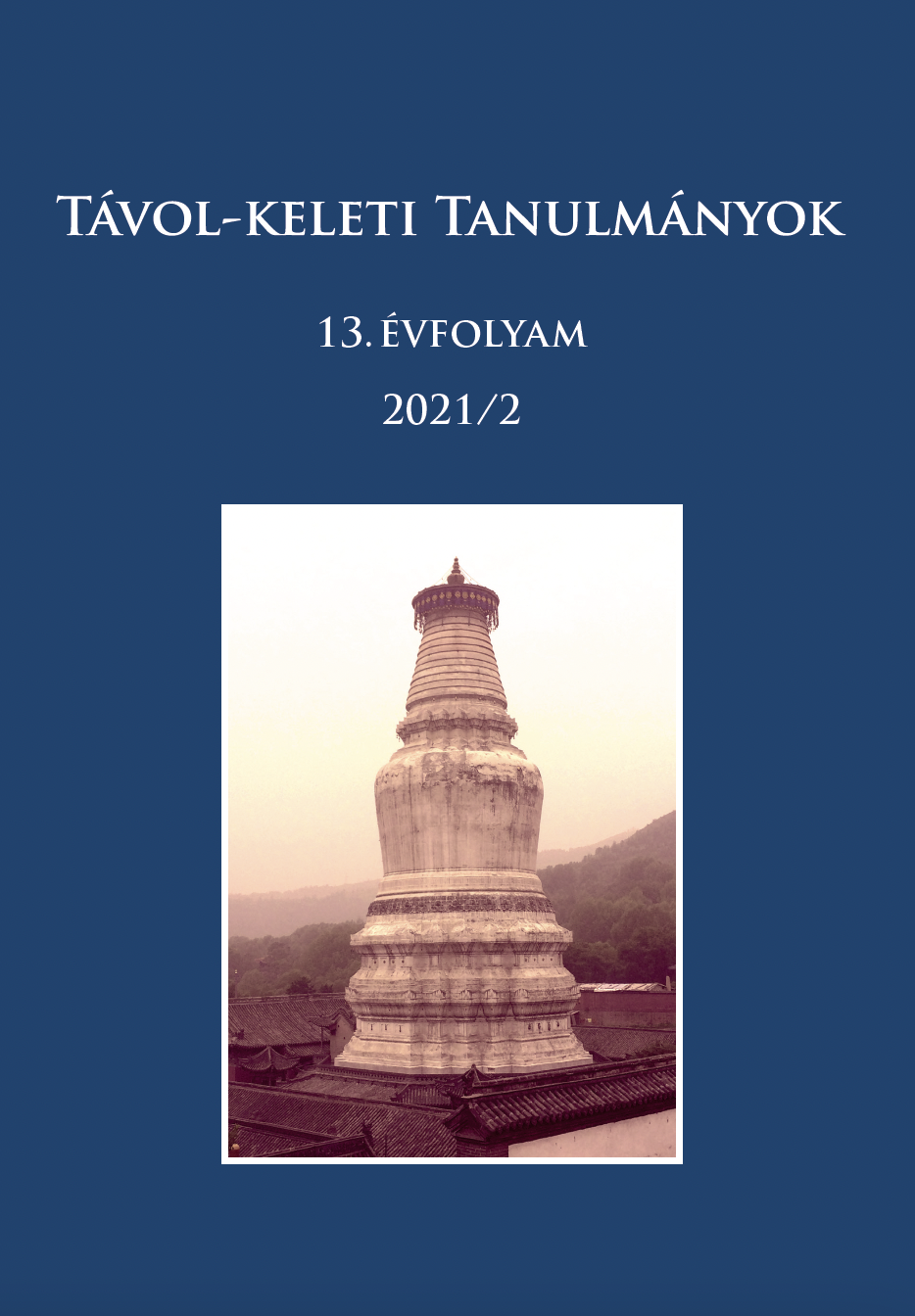The Characteristics and Changes of Snake-worship on Cheju Island Examined through Ponp’uri Literature
Published 2022-09-05 — Updated on 2022-09-13
Keywords
- snake worship,
- ponp'uri,
- Cheju shamanism,
- household deity,
- ŏp
- ch’ilsǒng faith,
- Big Dipper ...More
How to Cite
Copyright (c) 2022 Erika Vörös

This work is licensed under a Creative Commons Attribution-NonCommercial 4.0 International License.
Abstract
Korean religion and folklore are abundant in legends and beliefs about the serpent. Cheju island is a particularly precious source of information about snake-worship, not only because its relative isolation from the mainland enabled it to preserve certain beliefs longer than the peninsula, but also because its distinctive, indigenous culture gave rise to a peculiar belief-system by adopting elements from the outside world. We also have more information on the snake-lore in Cheju due to the accounts of Confucian officers delegated to the island and, more importantly, the body of specific shamanic narratives, the ponp’uris. Ponp’uris – origin stories of the worship of certain deities or shrines, recited during shamanic rites (kut) – are invaluable sources for research. Not only do they reflect historical and religious events, but also the endeavour of Cheju people to interpret and come to terms with these tendencies. Through ponp’uris and rituals associated with them people could respond to these situations, and even if only symbolically, restore order: they could release suppressed resentment and pain, and overcome Confucianist oppression by expressing their cultural identity, or adopt elements of other beliefs in order to survive.
References
- Kim Jǒng 김정 (金淨). Cheju pu’ngt’orok 濟州風土錄 [Cheju helyrajzi feljegyzései]. [online] Koreai klasszikusok központi adatbázisa (Han'guk kojŏn chonghap teit'ŏbeisŭ): http://db.itkc.or.kr (2019. május 25.)
- Kim Pusik 김부식 (金富軾) 1997. Samguk Sagi 三國史記 [A három királyság története]. Szöul: Solch’ulp’ansa.
- Yi Gŏn 이건 (李健). Cheju p’ungt’ogi 濟州風土記 [Cheju helyrajzi leírása]. [online] Koreai Tudásarchívum (Krpia) Koreai irodalmi gyűjtemények adatbázisa (Hanguk munjip ch’onggan): https://www.krpia.co.kr/viewer/open?plctId=PLCT00005160&nodeId=NODE05438523. (2020. november 8.)
- Byeon Sook-ja 변숙자 2014. „Ch’ilsǒng ponp’urie nat’anan C’hilsǒngshinangŭi yangsang <칠성본풀이>에 나타난 칠성신앙의 양상 [A Ch’ilsǒng-hit megjelenése a Ch’ilsǒng ponp’uri-ban].” T’amnamunhwa 탐라문화 46: 39–74. https://doi.org/10.35221/tamla.2014..46.002
- Chejudo muga ponp’uri sajǒn 제주도무가본풀이사전 [Cheju-i sámándalok és ponp’uri-k enciklopédiája] 1991. Szöul: Minsokwon.
- Chin Sŏng-gi 진성기 1978. „Ch’ejudoŭi baemshinang 제주도의 뱀 신앙 [Cheju sziget kígyókultusza].” Hanguk munhwa illyuhak 한국문화인류학 10: 110–123.
- Hanguk minjokmunhwa taebaekkwa sajŏn 한국민족문화대백과사전 (Encyclopedia of Korean Culture). http://encykorea.aks.ac.kr (2020. 11. 08.)
- Hanguk minsok daebaekkwasajŏn 한국민속대백과사전 (Encyclopedia of Korean Folk Culture). https://folkency.nfm.go.kr/kr/main (2020. 11. 08.)
- Heo Namchoon 허남춘 2015. „Ch’ilsǒnggwa pugun shinang, paem shinang 칠성과 부군(府君) 신앙, 뱀 신앙 [Ch’ilsǒng- és pugun-kultusz, kígyóhiedelmek].” Pigyominsokhak 비교민속학 58: 11–46. https://doi.org/10.24043/isj.55
- Heo, Nam-chun – Lee, Hyun-jeung 2018. „Sea deity beliefs of the Kuroshio oceanic cultural sphere: maritime traditions and cultural interaction among Jeju Island, Zhoushan Archipelago, and the Ryukyu Islands.” Island Studies Journal 13.1: 171–184.
- Hilty, Ann – Kim, Soonie. 2013. „Worshipping the snake goddess: Jeju’s Tosandang Halmang of Tosan Village.” Jeju Weekly. http://www.jejuweekly.com/news/articleView.html?idxno=3154 (2020. 11. 08.)
- Hyeon Yong-Jun 현용준 1980. Chejudo musok charyo sajǒn 제주도무속자료사전 [Cheju sziget néprajzi anyagának enciklopédiája].” Szöul: Shingumunhwasa.
- Kang Cheol 강철 2010. „Chejudo sashinsǒrhwaŭi t’ŭksǒng yǒngu: pont’o sashinsǒrhwawaŭi pigyo 濟州島 蛇神說話의 特性 硏究: 本土 蛇神說話와의 比較 [A kígyóalakú istenségek mondáinak jellegzetességei Cheju szigetén: összehasonlítás a szárazföldi kígyóistenség mondáival]. (MA thesis, Cheju University)
- Kang So-Jeon 강소전 2016. „Chejudo Ch’ilsǒngŭi hyǒngsǒnggwa ponp’uri chǒnsŭng 제주도 칠성의 형성과 본풀이 전승 [A Cheju szigeti ch’ilsǒng-hit kialakulása és a ponp’uri-k áthagyományozása]”, Ch’ilsǒng minsokhak yǒngu 칠성민속학연구 27: 195–224.
- Kim Dong Seop 김동섭 2002. „T’osan-dang ponp’uri yŏngu 兎山堂 본풀이 硏究 [A T’osan-dang ponp’uri].” Chejudo-shi yŏngu 제주도시연구 11: 219–271.
- Kim Myung-Ja 김명자 1999. „Kyǒnggi chiyǒgŭi t’ǒjushinang 경기 지역의 터주신앙 [T’ǒju-hit Kyǒnggi tartományban].” Yǒksaminsokhak 역사민속학 9: 169–190.
- Kim Myung-Ja 김명자 2001. „Kyǒnggijiyǒgŭi ǒpshin shinangŭi chisǒkkwa pyǒnhwa 경기지역 업신 신앙의 지속과 변화 [Az ǒpshin-hit kontinuitása és változásai Kyǒnggi tartományban]. Shilch’ǒnminsokhak 실천민속학 3: 57–83.
- Kim, Seong-Nae 2004. „Shamanic Epics and Narrative Construction of Identity on Cheju Island.” Asian Folklore Studies 63.1: 57–78.
- Neff, Robert. 2011. „The legends of Jeju’s ’Snake Cave’.” Jeju Weekly. http://www.jejuweekly.com/news/articleView.html?idxno=2092 (2020. 11. 08.)
- Tak Myong Hwan 탁명환 1978. „Cheju sashinshinange taehan sogo – T’osan-dang paemshinangǔl chungshimǔro 제주 사신신앙에 대한 소고 - 토산당 뱀신앙을 중심으로 - [Rövid tanulmány a cheju-i kígyókultuszról – A T’osan-szentély kígyókultuszával a középpontban].” Hanguk munhwa illyuhak 한국문화인류학 10: 71–78.

